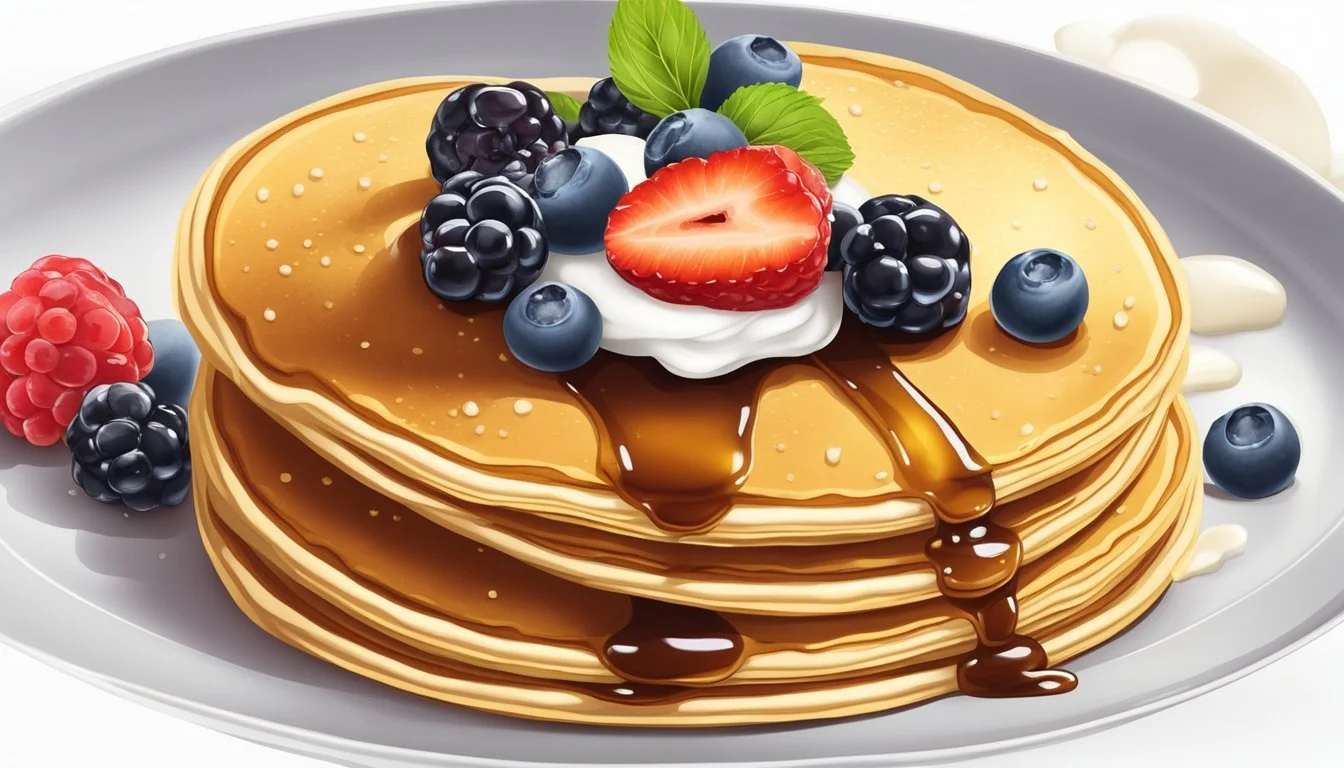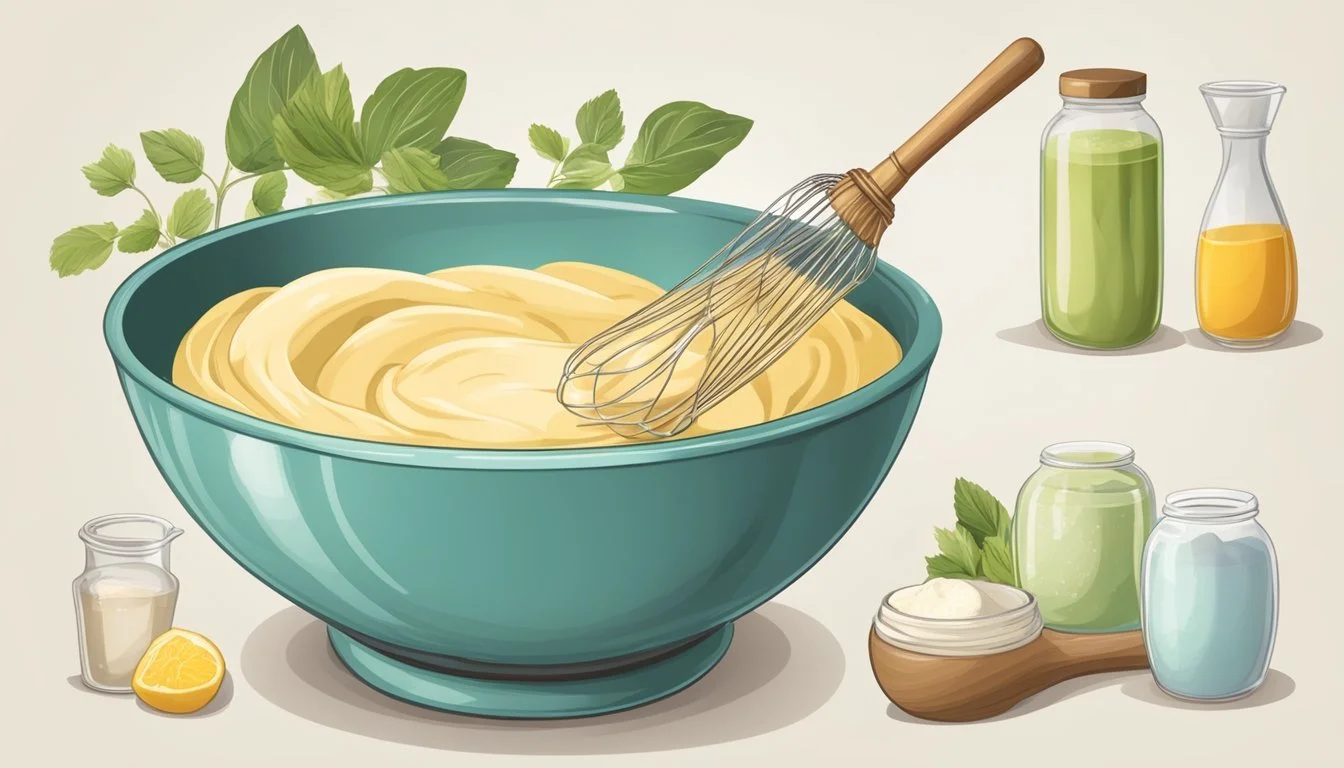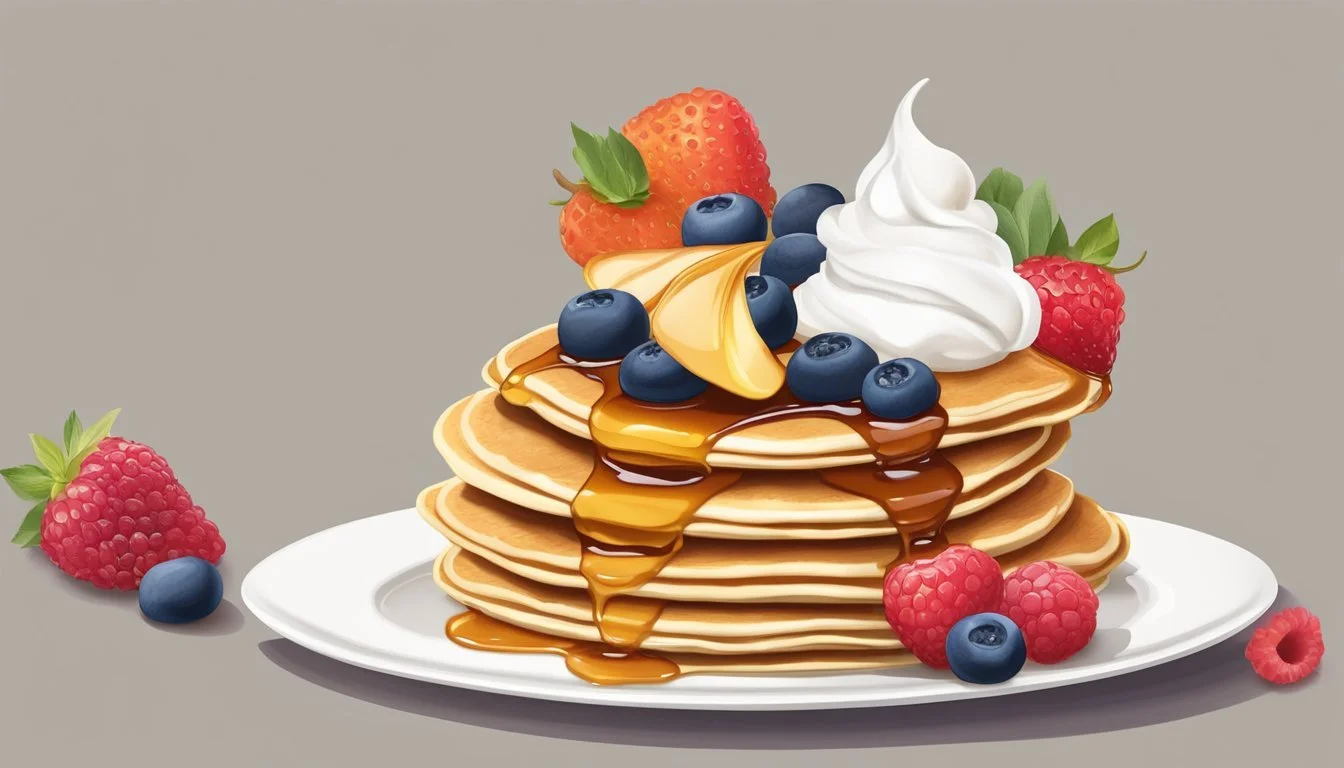Are Pancakes Gluten-Free?
Understanding Their Ingredients and Options
Pancakes are a popular breakfast option enjoyed by many across the globe. Traditionally, pancakes are made using wheat flour, which contains gluten, a protein that gives dough its elasticity and cakes their fluffiness. However, people with celiac disease or gluten sensitivity may experience adverse reactions to gluten, making classic pancakes unsuitable for their diet. To accommodate this dietary need, gluten-free pancakes have been developed, using alternative flour sources that do not contain gluten.
The rise in awareness of gluten-related disorders has significantly increased the availability of gluten-free food options. For those seeking a gluten-free breakfast, pancakes can still be on the menu by replacing traditional wheat flour with a variety of gluten-free flours such as almond flour, brown rice flour, or a specialized gluten-free all-purpose blend. These flours aim to mimic the taste and texture of regular pancakes while making them safe for individuals avoiding gluten.
In creating gluten-free pancakes, attention to detail is key. The process often involves a careful combination of gluten-free flours and starches to achieve a desirable consistency and flavor. Additionally, alterations to the standard pancake recipe may be necessary, including adjustments to liquid ratios and resting times for the batter, to ensure that the end result is as fluffy and delicious as their gluten-containing counterparts. These adaptations have made gluten-free pancakes a delightful and inclusive option for breakfast tables everywhere.
Understanding Gluten-Free Diets
Adopting a gluten-free diet is crucial for individuals with celiac disease and can offer various health benefits. This section explores the essentials of gluten and the advantages of eliminating it from one's diet.
What Is Gluten?
Gluten is a family of proteins found in grains like wheat, barley, and rye. It acts as a glue that holds foods together, giving them elasticity and a chewy texture. For those with celiac disease, consuming gluten triggers an immune response that damages the lining of the small intestine, leading to a range of health issues.
Benefits of a Gluten-Free Diet
A gluten-free diet is essential for managing symptoms and promoting intestinal healing in individuals with celiac disease. The diet involves meticulously avoiding all sources of gluten. Benefits include:
Symptom relief: Going gluten-free can alleviate symptoms such as abdominal pain, bloating, and diarrhea in sensitive individuals.
Intestinal healing: A strict gluten-free diet can help heal the intestinal damage caused by celiac disease over time.
Improved nutrient absorption: Healing the intestinal lining can lead to better absorption of essential nutrients from food.
People without celiac disease may also choose a gluten-free diet for other health reasons, such as feeling an increase in overall well-being and digestive comfort. However, it's important to ensure that a gluten-free diet is well-balanced to avoid nutritional deficiencies.
Gluten-Free Pancake Ingredients
Creating delicious gluten-free pancakes requires careful selection of alternative flours and binders to mimic the properties of gluten. Dairy components can be traditional or substituted to cater to dairy-free diets.
Choosing Gluten-Free Flours
Gluten-free pancakes often start with a blend of gluten-free flours to achieve a balanced texture and flavor. Almond flour and coconut flour are popular choices for their nutritional value and subtle taste profiles. Almond flour adds a nutty flavor and moisture, while coconut flour offers a lighter, slightly sweet characteristic. These flours can be combined or used in conjunction with other gluten-free options such as brown rice flour or a pre-mixed gluten-free flour blend to ensure the right consistency.
Common Gluten-Free Flours:
Almond flour
Coconut flour
Potato starch
Cassava flour
Dairy and Dairy-Free Alternatives
The traditional ingredient of milk in pancake batter can be easily substituted with almond milk or other dairy-free milks to accommodate those avoiding dairy. The choice of milk, dairy or non-dairy, will not significantly alter the texture but can impart subtle flavor differences. When opting for dairy ingredients, using butter contributes to a richer taste, whereas those who prefer dairy-free might choose oils or dairy-free butter alternatives.
Dairy/Dairy-Free Options:
Regular milk
Almond milk (or other plant-based milks)
Butter (for richer flavor)
Oil or dairy-free butter (for dairy-free alternatives)
Binding Agents for Gluten-Free Pancakes
To compensate for the lack of gluten's binding properties, ingredients like eggs, xanthan gum, or flax eggs (a combination of flaxseed meal and water) are essential. Eggs are a common binder and provide structure, while egg replacers are vital for those with egg allergies or vegan preferences. Xanthan gum is a gluten-free baker's ally, offering the stickiness that gluten would typically provide to hold pancakes together.
Binding Agents:
Eggs or egg replacer
Xanthan gum
Flax egg (1 tablespoon flaxseed meal + 2.5 tablespoons water)
Preparing the Pancake Batter
Creating the perfect gluten-free pancake batter requires careful attention to the balance and mixture of wet and dry ingredients. The consistency of the batter is crucial for fluffy and tender pancakes.
Mixing Wet and Dry Ingredients
In the preparation of gluten-free pancake batter, it's essential to separately assemble the dry and wet ingredients before combining them. One starts with a mixing bowl for the dry components, typically consisting of gluten-free flour, baking powder, and salt—an additional sweetener like sugar may also be included. This mixture should be whisked to ensure an even distribution of ingredients.
The wet ingredients, which commonly include milk—or a non-dairy substitute—eggs, oil or melted butter, and vanilla extract, are then combined in a separate measuring cup or bowl. These ingredients are vigorously whisked together until fully integrated.
Achieving the Right Consistency
Once the wet and dry ingredients are each mixed in their respective vessels, the wet mixture is added to the dry. Using a whisk or a spatula, one gently folds the wet ingredients into the dry until just combined. Over-mixing should be avoided to prevent the batter from becoming tough.
The batter's thickness will determine the texture of the pancakes; it should be moderately thick and pourable. Most recipes recommend letting the batter rest for 5 to 30 minutes. This resting period allows the flour to absorb the liquid, resulting in a more coherent and smooth batter.
Utilizing these steps with patience and precision will aid in achieving a desirable gluten-free pancake batter ready for cooking.
Cooking Gluten-Free Pancakes
Cooking gluten-free pancakes involves special considerations to ensure the end product is both delicious and safe for those with gluten sensitivities. Achieving the perfect gluten-free pancake requires attention to equipment, cooking temperatures, and flipping techniques.
Using the Right Equipment
It's essential to use the proper tools when cooking gluten-free pancakes. A nonstick griddle or pan is preferred because it reduces the need for excess oil, thereby lowering the risk of sticking. For those who want an even heat distribution, an electric griddle or a well-seasoned cast iron skillet is ideal. Using a spatula that's wide enough to support the entire pancake can make flipping easier.
Recommended Equipment:
Nonstick griddle or skillet
Electric griddle
Cast iron skillet
Wide spatula
Understanding Cooking Temperatures
The temperature at which gluten-free pancakes are cooked can affect their texture and taste. These pancakes should be cooked on a medium-high heat. This allows the batter to cook evenly, creating a golden-brown exterior without burning. Cooking temperatures too high could result in pancakes that are raw in the middle. If using a griddle or skillet, one can usually tell it's at the right temperature when drops of water sizzle and evaporate upon contact.
Heat Settings:
Medium-high heat
Proper preheating: Griddle or skillet should be hot before adding batter
Flipping Techniques
When to flip a pancake is a key aspect of pancake cooking. Gluten-free pancakes typically need to be flipped once bubbles form on the top and the edges appear slightly dry. The first pancake is often a test to gauge the correct cook time and can be used to adjust the temperature if needed. The pancake should be gently loosened with the spatula before flipping, being careful to not deflate the pancake. It should only be flipped once to maintain structure.
Flipping Checklist:
Bubbles form on the batter surface
Edges look dry and slightly firm
Flip only once to maintain shape
Serving and Topping Ideas
When it comes to pancakes, the beauty lies in their versatility, especially with toppings that can transform the modest pancake into a delightful treat.
Syrups and Sweeteners
Pancakes pair splendidly with a range of syrups and sweeteners. The classic choice is maple syrup, with its unmistakable rich flavor that complements the pancake's texture. For a lighter option, one might consider agave nectar or honey. Those who prefer a lower glycemic index option could opt for coconut sugar syrup.
Maple Syrup: A timeless favorite with a unique, caramel-like flavor.
Honey: Offers a distinct sweetness with floral notes.
Agave Nectar: A vegan-friendly syrup with a mild taste.
Coconut Sugar Syrup: A more caramel-like taste with a lower glycemic impact.
Fruit and Nut Toppings
Adding fruit and nuts not only brings nutrition but also a burst of fresh flavors and textures. Fresh fruits like blueberries, bananas, or a medley of seasonal berries provide a refreshing zing. Nut butters, such as almond or peanut butter, can add creaminess and a satisfying nutty flavor to your pancake stack.
Blueberries: Serve fresh or simmered into a compote.
Bananas: Slice them up for a naturally sweet addition.
Nut Butters: Drizzle over pancakes for added richness and protein.
Creative Pancake Toppings
For a truly indulgent experience, go beyond the traditional. Chocolate chips can be sprinkled on a freshly flipped pancake for a melt-in-your-mouth sensation. A dollop of whipped cream not only looks appealing but also adds a cloud-like texture. For a luxurious twist, consider a small scoop of gelato or ice cream for a contrast between hot and cold.
Chocolate Chips: Melt into the batter for a decadent twist.
Whipped Cream: Adds lightness and a touch of elegance.
Ice Cream: Ideal for turning pancakes into a dessert.
Storing and Reheating
Proper storage and reheating techniques ensure pancakes maintain their texture and taste. This section outlines optimal methods for keeping pancakes warm after cooking, as well as freezing and reheating them at a later time.
How to Keep Pancakes Warm
To keep pancakes warm after cooking, one should place them on a heatproof plate in an oven preheated to a low temperature, around 200°F (93°C). They can be covered lightly with aluminum foil to prevent drying out. This method keeps pancakes warm for serving without compromising their moisture or texture.
Freezing and Reheating Pancakes
Freezing: Pancakes cool off quickly, so it's important to freeze them promptly if they are not to be consumed immediately. To freeze pancakes, lay them in a single layer on a baking sheet and place them in the freezer until solid, about 2 hours. Once frozen, pancakes should be transferred to a freezer-safe bag or container, with sheets of parchment paper between them to prevent sticking.
Reheating: For reheating, pancakes can be taken directly from the freezer to the reheating appliance. Here are methods one can use:
Microwave: Place pancakes on a microwave-safe plate and heat on high for about 30 seconds to a minute, depending on the microwave's power.
Oven: Preheat the oven to 350°F (175°C), place pancakes on a baking sheet, and cover them with foil. Heat for about 5-10 minutes.
Toaster: Pop pancakes into a toaster at a medium setting for a quick reheat.
Air Fryer: An air fryer can reheat pancakes at 350°F (180°C) for 2 to 3 minutes, ensuring they are placed in a single layer.
Using these storing and reheating methods will keep pancakes enjoyable even after they've been made in advance.
Gluten-Free Pancake Variations
Gluten-free pancake recipes provide a delightful breakfast option for individuals with gluten sensitivities or celiac disease, and they also offer versatility to cater to various dietary requirements and health goals. The adaptations of gluten-free pancake recipes can range from vegan and egg-free versions to protein-rich and low-calorie alternatives utilizing ingredients like almond and coconut flour.
Vegan and Egg-Free Options
One can create vegan and egg-free gluten-free pancakes by substituting eggs with ingredients like flaxseed or chia seeds mixed with water, which provide a similar binding effect. Applesauce or mashed bananas can also serve as egg replacements, adding natural sweetness and moisture. These substitutes not only eliminate the need for animal products but also cater to those who are allergic to eggs.
Egg Replacement Example:
1 tbsp flaxseed + 2.5 tbsp water = 1 egg
1 tbsp chia seeds + 2.5 tbsp water = 1 egg
Protein-Packed and Low-Calorie Pancakes
For those seeking a protein boost, gluten-free pancake recipes can incorporate protein powders or use alternative flours such as almond or coconut flour, which are higher in protein and fiber. Almond flour pancakes offer a nuttier flavor and are lower in carbs, whereas coconut flour is highly absorbent, requiring an increase in the number of eggs or egg substitutes to maintain moisture.
Protein Ingredients:
Almond flour
Coconut flour
Gluten-free protein powder
By making mindful ingredient choices like these, it’s possible to enjoy gluten-free pancakes that not only satisfy dietary restrictions but also align with personal health and nutritional goals.
Nutritional Information
When assessing the nutritional information of gluten-free pancakes, it is essential to look at both the macronutrient composition and the presence of various vitamins and minerals in the product. Gluten-free pancakes can vary significantly in their nutrient content based on the ingredients used.
Macronutrients in Gluten-Free Pancakes
Gluten-free pancakes generally contain a balance of carbohydrates, proteins, and fats, although the exact amounts can differ by recipe. A typical serving, which might be one pancake, can provide around 176 calories, with 50.2 calories from fat. Considering fat, gluten-free pancakes can contain approximately 5.6g of fat, which may include a mix of unsaturated and saturated fats, though trans fat is not a common component. Carbohydrates are often present in substantial quantities, generally making up the bulk of the calorie content, while fiber content may be present depending on the flour blend used. The protein content is variable, and may be lower than that found in traditional pancakes containing wheat flour, unless additional protein-rich ingredients are included.
Nutrition Breakdown per Pancake (approximately 75g):
Calories: 176 kcal
Fat: 5.6g
Saturated fat: varies
Cholesterol: varies
Sodium: varies
Carbohydrates: varies (predominantly from gluten-free flours like rice or almond)
Fiber: varies (dependent on flour type)
Protein: varies
Vitamin and Mineral Content
The vitamin and mineral content in gluten-free pancakes will be primarily influenced by the selected ingredients. For instance, flours such as almond flour can contribute to higher levels of calcium and potassium. Other vitamins and minerals, like vitamin A, may be less prominent unless ingredients such as eggs or fortified products are used. It is important to note that the nutritional profile of gluten-free pancakes will not inherently contain gluten, making them suitable for individuals with celiac disease or gluten sensitivities. However, the absence of gluten does not necessarily make these pancakes more nutritious than their gluten-containing counterparts; it simply makes them a safe alternative for those who cannot consume gluten.
Typical Vitamins and Minerals:
Vitamin A: varies
Calcium: varies (can be enhanced with certain gluten-free flours)
Potassium: varies (dependent on ingredients like almond flour)
Buyers should always check the nutrition labels or recipes for specific information, as ingredient choices will greatly affect the overall nutritional value of the pancakes.
Conclusion
Traditional pancake mixes and recipes typically contain gluten due to their use of wheat flour as a primary ingredient. However, individuals seeking gluten-free options can be confident that delicious alternatives are readily available. Several gluten-free flour options provide a satisfying solution to create light and fluffy pancakes without gluten. Such flours include almond flour, buckwheat flour, and all-purpose gluten-free flour blends that often incorporate rice or potato starch.
For the best results, one might consider:
Allowing the batter to rest for about 5 minutes after mixing to enhance texture.
Whisking dry and wet ingredients separately before combining to avoid overmixing.
Employing nut butters for increased flavor and to assist in binding the batter, which may improve fluffiness.
Proper technique and quality ingredients are key to creating a gluten-free pancake that rivals its gluten-full counterpart in both taste and texture. Consumers are advised to review ingredient labels carefully to ensure that all components, including garnishes and toppings, meet gluten-free standards.
By following these guidelines, they can enjoy pancakes that are not only safe for a gluten-free diet but also fulfill the craving for a classic, comforting breakfast dish.









